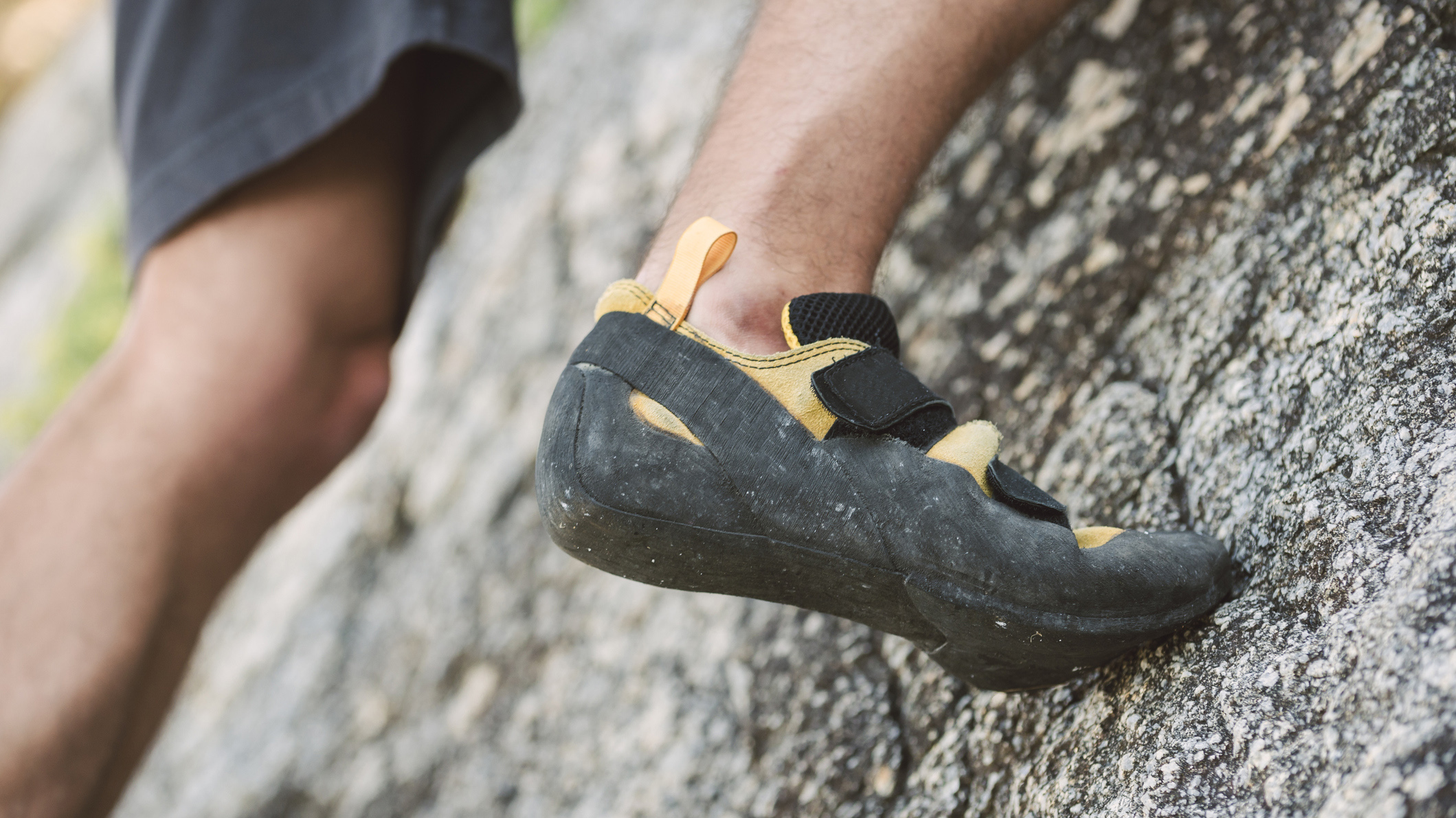
What is smearing in climbing? The word smear has multiple definitions and we’re certainly not going to get into all of them here. If you aren’t familiar with the smearing rock climbing term, you’d perhaps think it was something to do with ego-driven climbers trying to downplay each other’s achievements. “She says she does all her climbs on-sight but that’s a total lie.” “Sure, it looked like he free soloed it on Insta, but I know he had a rope on for most of the route.”
This is, of course, utter nonsense. Smearing in climbing has nothing to do with smear campaigns. Nor does it have anything to do with coating a section of a climb with a sticky substance, or any of the other definitions of the word.
No, in climbing, smearing means something else entirely. So, just what is smearing in rock climbing exactly? We've asked one of our mountaineering experts to explain all...
What is smearing in climbing?
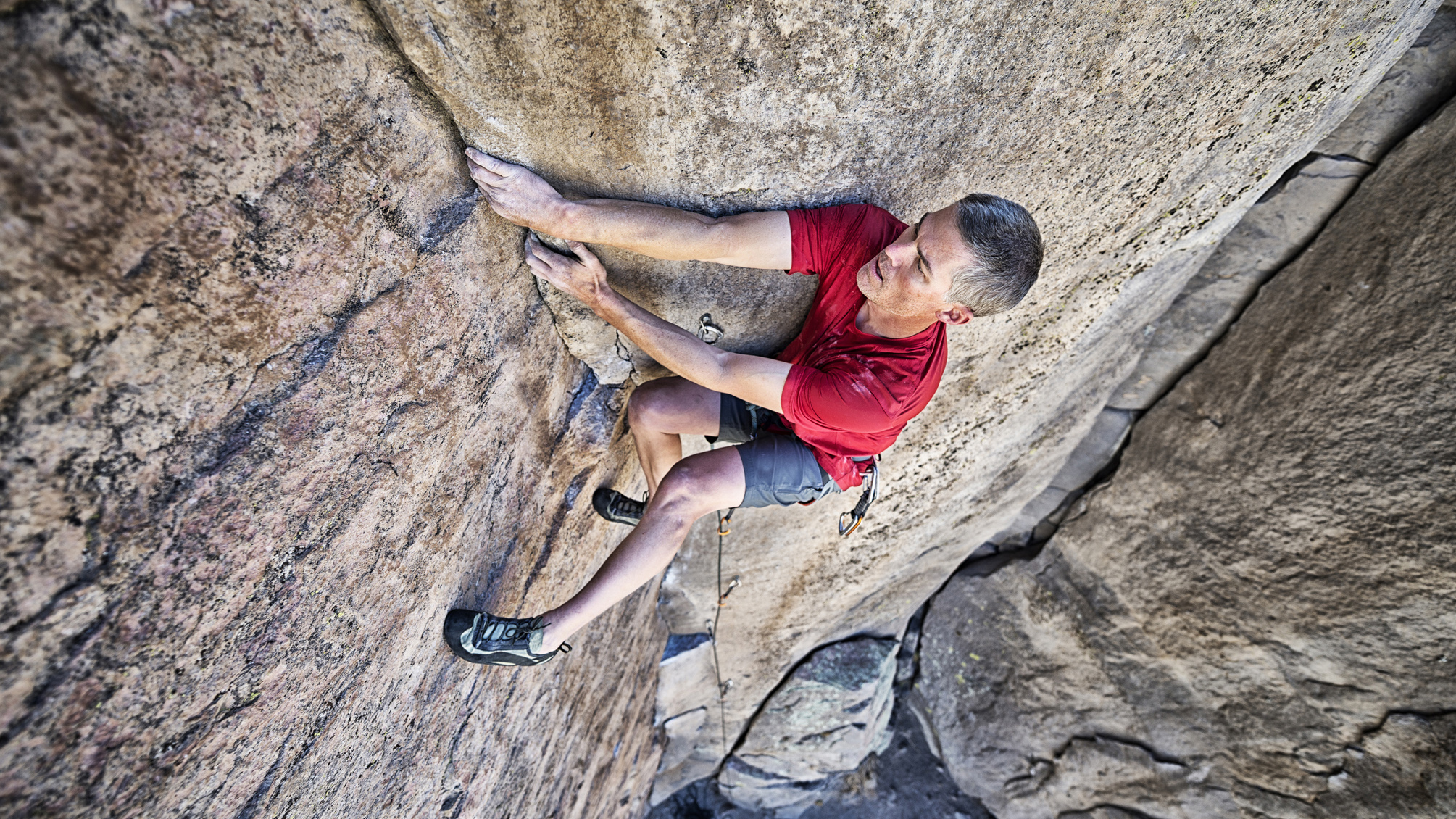
Smearing is a rock climbing term used to describe the action of placing the sole of your shoe onto the rock to create a high amount of friction on relatively featureless slabs.
In essence, rather than a traditional foothold, the climber uses the surface of the rock, relying on the friction generated between the rubber in their shoes and the wall. In order for it to be effective, the climber has to ensure that they put as much force as is needed into their foot to provide enough friction to hold it in place.
It's a technique used to tackle the more featureless sections climbers may find on a given route. Where traditional holds are found wanting, enter the smear. You’ll need decent rock climbing shoes to do it effectively on very steep terrain, as well as confidence in your technique.
Meet the expert
More about smearing
- Unlike most climbing techniques, when smearing you'll want to lean away from the wall
- A softer shoe allows the flexibility to get as much rubber in contact with the rock as possible
Most climbing techniques involve the hips being as close to the wall as possible but this isn’t the case when it comes to smearing. Here you’ll want to lean away from the wall just enough to be able to apply the necessary force to your foot, with as much of your sole as possible pressing firmly against the rock.
A softer shoe, such as the Black Diamond Momentum, is better for smearing, as it allows the flexibility to get as much rubber in contact with the rock as possible. Smearing can be quite a mental, as well as physical, challenge. It can often seem unbelievable that your foot will stay in place. However, friction, as we’ll discover, is a powerful beast.
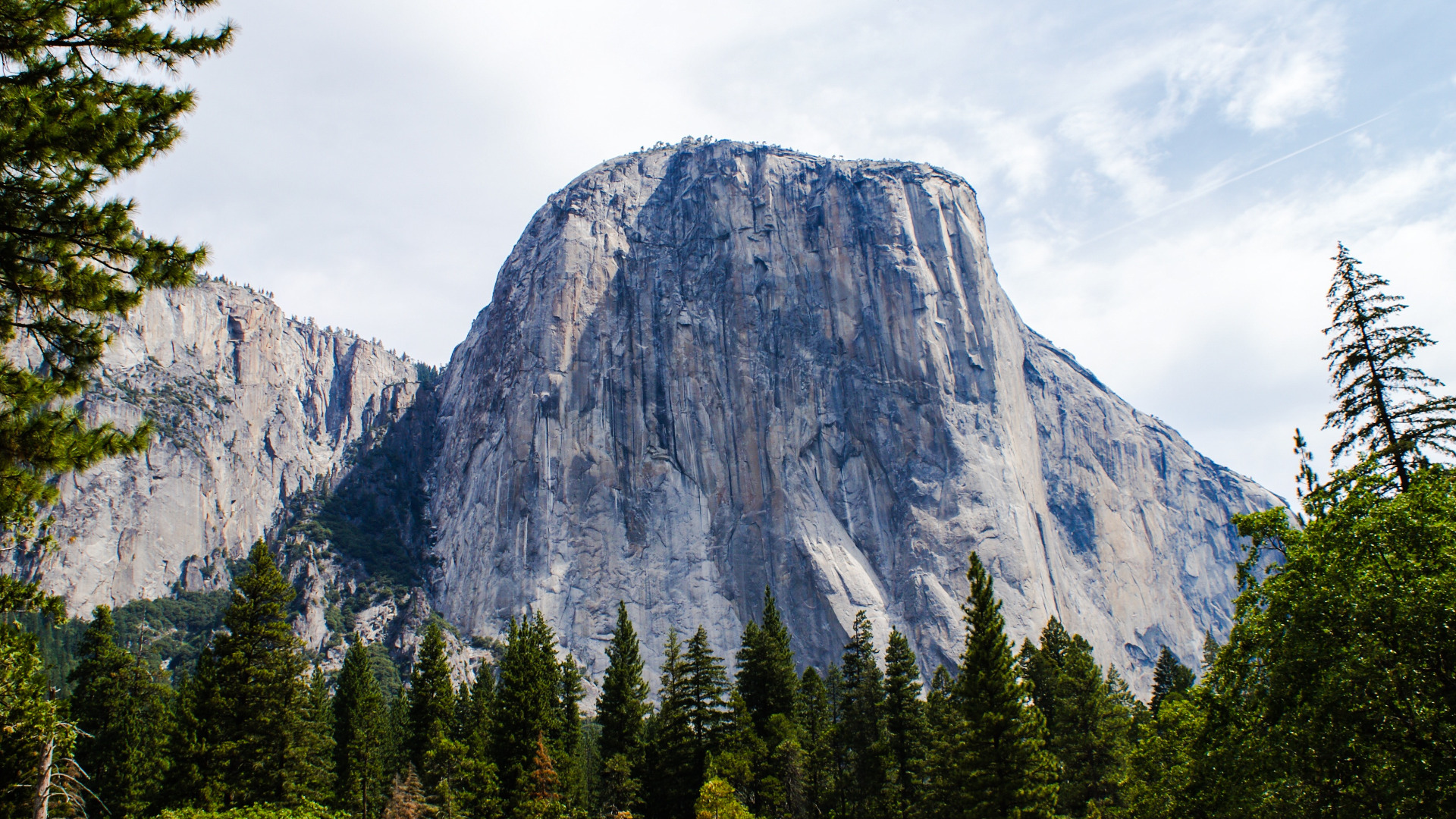
One of the most unnerving parts of Alex Honnold’s famous climb of Freerider on El Capitan in 2017 was a steep, polished, almost featureless section known as the Freeblast Slab. Here, Honnold was reliant on hugely precise edging and smearing to progress up the route. “One foot slip and you’re off the wall,” Alex says in Free Solo. It was whilst on the first crux of Freeblast that he called off his initial attempt to Free Solo the route.
How does smearing work?
- The marriage of rock and rubber creates a lot of friction, which is how smearing works
- The climber still has to apply the appropriate force to hold the foot in place
- Smearing is not effective on wet rock, as the water acts as a lubricant
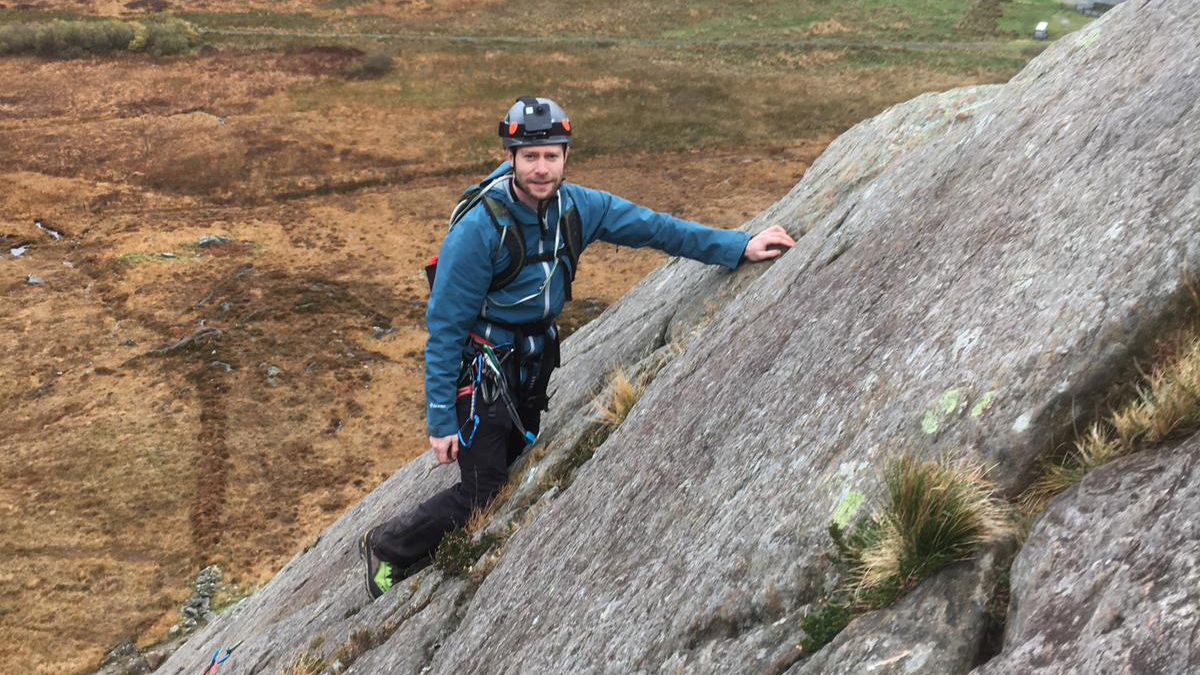
The marriage of dry rock and rubber provides tons of friction, which is why smearing is an effective technique. Friction is the force between two surfaces that are either sliding or trying to slide across one and other. The more of the shoe’s rubber sole you can get into contact with the rock, the better. However, greater surface area doesn’t equal greater friction – what’s key is that the climber applies the appropriate amount of force in order to create the required amount of friction.
Water acts as a lubricant and reduces the force of friction between two surfaces. This is why climbing or scrambling on wet rock is so much more challenging than on dry rock, especially when it comes to techniques like smearing. A ledge you can hold onto is a ledge you can hold onto whether it’s wet or dry, whereas a polished slab that provides traction when dry becomes a slippery slope in the wet.
Is smearing a technique used in hiking?
- When hiking on rock slabs, smearing comes into play
- Approach shoes are better than standard hiking shoes or running shoes
- This is because they've got flat rubber areas towards the front of the sole
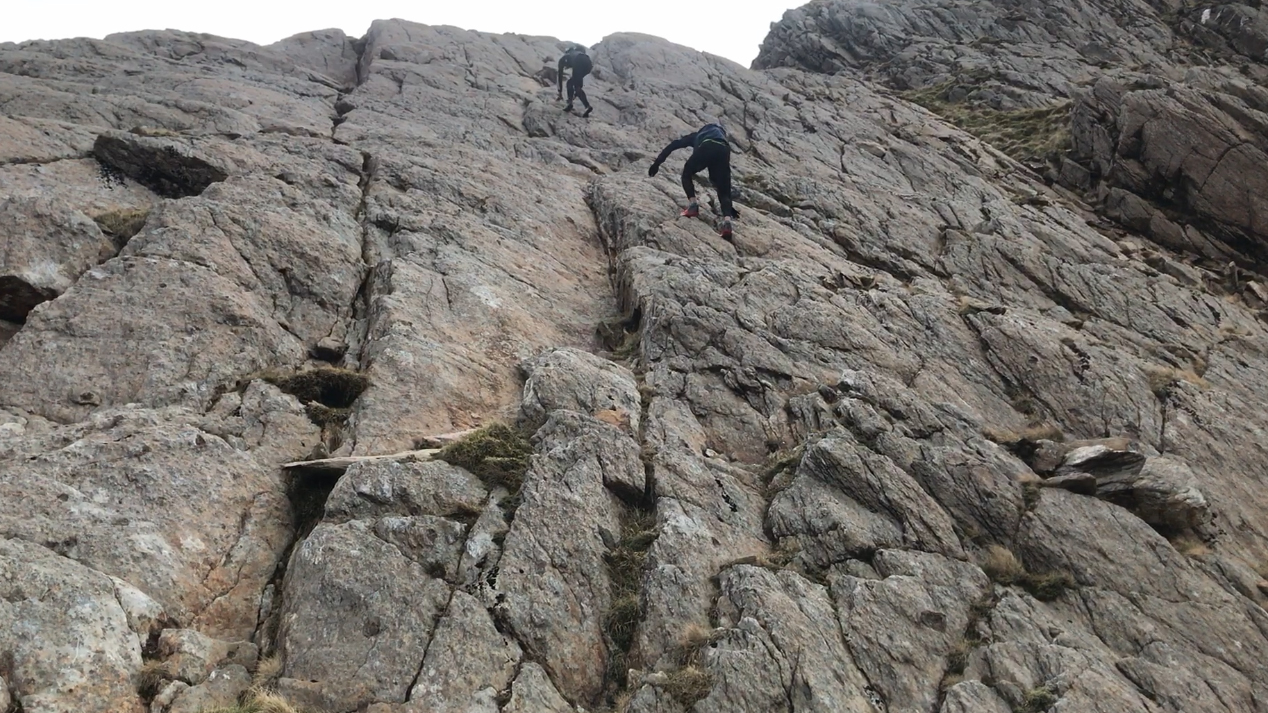
It’s not only a rock climbing technique either, well certainly not in terms of the physics involved anyway. Many of us will have unknowingly done a bit of smearing during our hiking adventures. I’m pretty sure we’ve all tested our hiking shoes' fancy Vibram soles on an angled slab at some point. When we find a ramp of slabby rock, it’s only natural to be curious as to whether or not our footwear will hold.
I know I’d done this loads of times before getting into climbing, both when hiking and when moving into scrambling territory. On graded scrambling routes, these kinds of slabs are very common and they get progressively steeper as you move through the grades. While the outsoles of standard hiking shoes and boots are designed with the need to grip rock in mind, they also have to provide traction on softer, muddy surfaces too. This means the sole is designed to be a bit of a jack of all trades and is nowhere near as suitable for smearing as the soles on climbing shoes.
A good halfway house is the approach shoe, which features a sticky rubber sole and flat “climbing zones” designed specifically so that there’s more rubber in contact with the rock compared to standard hikers. I’d always recommend an approach shoe for harder scrambling routes and the easier climbing grades.







